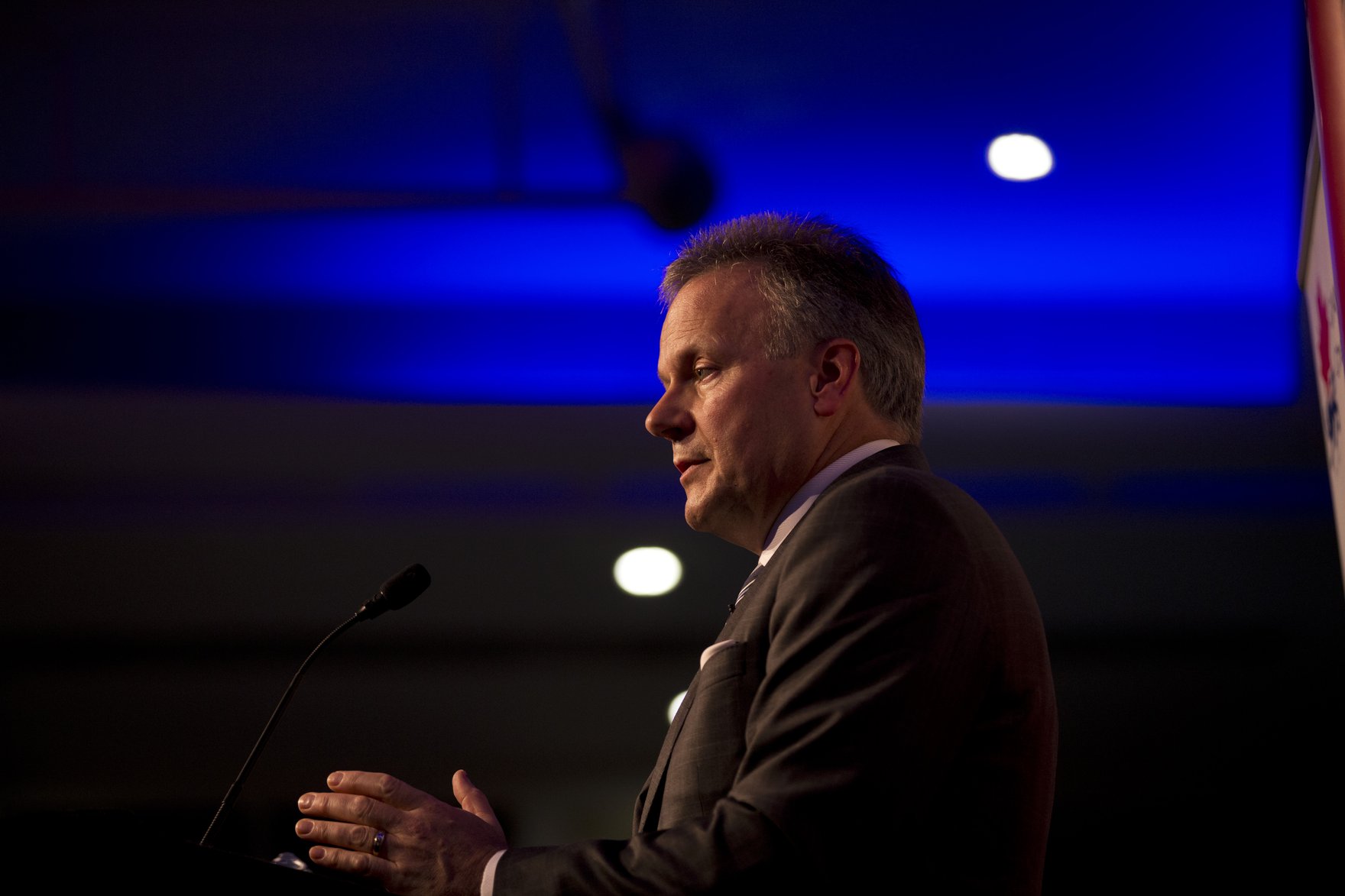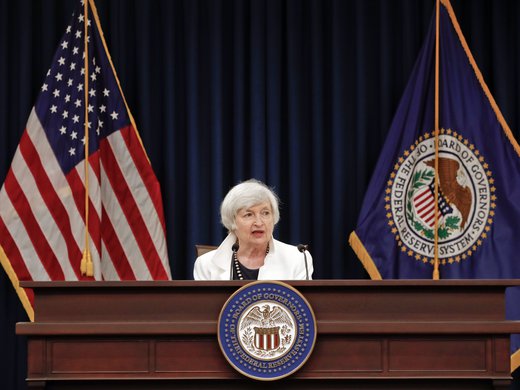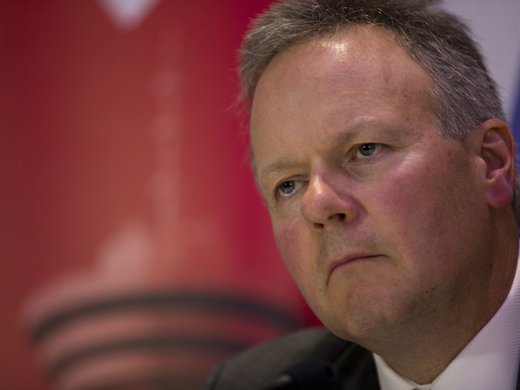Bank of Canada Governor Stephen Poloz has, for some time, encouraged disagreement in financial markets over the path for interest rates. It hasn’t been easy, as the closest observers of the Bank are prone to groupthink. But on the eve of 2018, Poloz has finally achieved what he wants: an honest debate about monetary policy.
In one corner, a group of analysts expect three increases next year; in the other, a pack of analysts predict only one increase. The discrepancy in forecasts suggests that Poloz’s refusal to guide investors is creating some healthy confusion; there will be griping and volatility, but the uncertainty should encourage more hedging and less thoughtless risk-taking reminiscent of the pre-crisis years.
The path for Canadian interest rates next year isn’t a complete mystery. The central bank repeated in its final policy statement of 2017 that stronger-than-expected economic growth meant that “higher interest rates will likely be required over time.” How much higher, and over how much time, are difficult questions to answer because there are differing views over the extent to which the central bank can ignore signals that typically suggest that inflation pressures are building. Poloz and his inner circle of advisers could easily justify an increase as early as January 17 during the first policy announcement of 2018, but they probably won’t. Poloz has already spent much of the latter part of the year explaining why he is inclined to proceed cautiously, despite the steady flow of good news for the Canadian economy.
GDP grew by about three percent this year, the most since the rebound from the Great Recession and the fastest among Group of Seven countries. The unemployment rate was 5.9 percent in November, dropping below six percent for only the sixth time, according to monthly records that date back to the start of 1976. Poloz himself has described the economy as near full employment, reinforcing his decision to raise interest rates twice over the summer, lifting the benchmark rate to one percent.
But this is where the arguments about Canadian policy — and about Poloz’s plan for interest rates — begin. In the textbooks, a central bank that is on the cusp of full employment would be raising interest rates to cool the economy and keep inflation under control. The Bank of Canada has not raised rates since September. With this is mind, some economists — in particular those hung up on the “neutral” interest rates, an estimate of where the policy rate should be when the economy is neither too hot nor too cold — think the Bank of Canada is asleep at the switch.
The Bank of Canada’s most recent estimate suggests the neutral nominal rate is in the range of 2.5 percent to 3.5 percent, down from 4.5 percent to 5.5 percent before the crisis. With the benchmark rate at one percent, it’s at least 1.5 percentage points from neutral. That’s a long way from home, considering the central bank tends to change the benchmark rate in quarter-point increments. It’s also lower than inflation, creating a condition called “negative interest rates.” Those ultra-low borrowing costs have also encouraged Canadian households to pile up record levels of debt, while inflating housing and other asset prices. Those pressures will persist as long as benchmark lending costs remain unusually low.
“The solution to getting the beast under control cannot be to feed it further with negative interest rates,” Krishen Rangasamy, an economist at National Bank of Canada, said earlier this month. “As such, we continue to call for tighter monetary policy in 2018.”
Rates will rise next year, unless something unexpected happens that knocks the Canadian or global economy badly off course. Poloz this month said Canadians should look back on 2017 with “considerable satisfaction,” adding that “2018 is looking positive too.” The unemployment rate could drop below the modern record of 5.8 percent set in October 2007. Hundreds of millions of dollars in infrastructure spending that the federal government budgeted over its first two years is beginning to make a difference on the ground. Even if economic growth slows to two percent, it would still exceed the rate at which the central bank estimates the economy can expand without stoking inflation.
There is little evidence that the central bank would lose its grip on inflation in the near future. The Consumer Price Index was 1.4 percent higher in October than a year earlier, and the three price measures the central bank follows to get a better sense of where inflation is headed were all comfortably below the Bank of Canada’s two percent target.
The price indicators suggest that policy makers can be patient, and Poloz has given every indication that he intends to be.
Observers of Canadian monetary policy would do well to think back to how Janet Yellen and the United States Federal Reserve started their current interest rate cycle. Yellen, the outgoing chair of the Fed, resisted calls to raise borrowing costs in a determined fashion. She insisted on reducing as much economic “slack” as possible, so long as inflation remained dormant. Yellen’s Fed raised interest rates once in 2015, once in 2016 and three times this year. During that period, the United States unemployment rate has dropped to around four percent from 5.7 percent at the start of 2015.
Poloz said several times this year that the US experience of the past few years could be a guide for the Bank of Canada’s return to a more normal interest rate setting. In his year-end speech, Poloz noted that a record-high youth unemployment rate is one of the things that keeps him up at night. Yellen said similar things during 2015 and 2016, as she justified the Fed’s decision to leave interest rates lower than traditionalists said was prudent.
“We want the economy to grow hotter for a while so it uses up that excess capacity that still is in the labour market,” Poloz said in an interview with the Canadian Broadcasting Corporation on December 15. “The US economy for the last 18 months or so has been in that same place.”
Some economists were dismissive of Poloz’s concern about youth unemployment. National Bank pointed out that the participation rate of younger workers in the US labour market is eight percentage points lower than in Canada, and the Fed still raised interest rates this month.
It’s a good point, and one the central bank will likely consider. Poloz has said over the years that he learns from the views of market participants, which is why he wants their opinions to be formed research, not code words uttered by central bankers. A strong run of data between now and the January policy announcement could persuade the Bank of Canada to raise interest rates first thing in the new year. But for now, there is little reason to think that the central bank is in any hurry.



